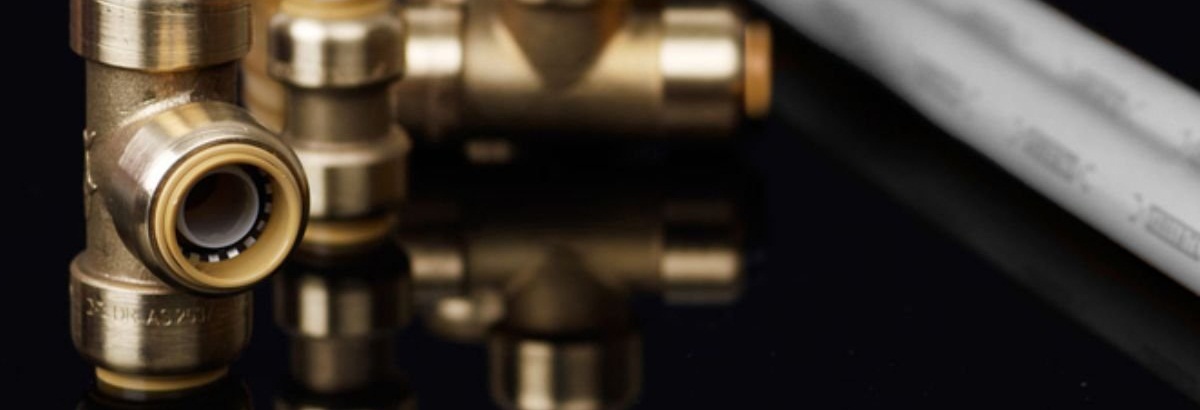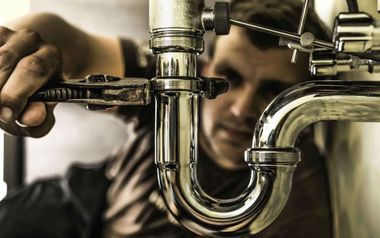Are you currently trying to locate advice about Plumbing Installation 101: All You Need to Know?

Comprehending just how your home's plumbing system works is essential for each homeowner. From supplying tidy water for alcohol consumption, cooking, and showering to securely removing wastewater, a properly maintained plumbing system is crucial for your household's health and wellness and comfort. In this detailed guide, we'll discover the detailed network that makes up your home's plumbing and deal tips on maintenance, upgrades, and handling common problems.
Intro
Your home's plumbing system is greater than just a network of pipes; it's an intricate system that ensures you have accessibility to tidy water and reliable wastewater elimination. Knowing its components and exactly how they work together can assist you stop costly repair work and make certain every little thing runs efficiently.
Standard Components of a Plumbing System
Pipelines and Tubing
At the heart of your plumbing system are the pipes and tubing that lug water throughout your home. These can be made from numerous materials such as copper, PVC, or PEX, each with its advantages in regards to resilience and cost-effectiveness.
Fixtures: Sinks, Toilets, Showers, etc.
Fixtures like sinks, commodes, showers, and tubs are where water is utilized in your home. Understanding exactly how these fixtures link to the pipes system assists in detecting troubles and intending upgrades.
Shutoffs and Shut-off Factors
Shutoffs control the flow of water in your plumbing system. Shut-off shutoffs are critical throughout emergency situations or when you need to make repair services, enabling you to isolate parts of the system without interrupting water flow to the whole residence.
Water System
Key Water Line
The major water line attaches your home to the local supply of water or a private well. It's where water enters your home and is dispersed to different fixtures.
Water Meter and Pressure Regulator
The water meter procedures your water use, while a pressure regulator makes certain that water streams at a risk-free stress throughout your home's pipes system, protecting against damages to pipes and fixtures.
Cold Water vs. Hot Water Lines
Recognizing the difference in between cold water lines, which provide water directly from the main, and warm water lines, which carry heated water from the hot water heater, assists in fixing and planning for upgrades.
Water drainage System
Drain Pipes Pipeline and Traps
Drain pipes lug wastewater far from sinks, showers, and toilets to the drain or sewage-disposal tank. Traps protect against drain gases from entering your home and also catch debris that can trigger clogs.
Air flow Pipelines
Ventilation pipelines enable air into the water drainage system, avoiding suction that can slow water drainage and cause catches to empty. Correct ventilation is crucial for preserving the honesty of your pipes system.
Importance of Correct Drain
Ensuring proper water drainage avoids back-ups and water damage. On a regular basis cleaning drains pipes and keeping traps can stop pricey repair work and extend the life of your plumbing system.
Water Furnace
Sorts Of Water Heaters
Water heaters can be tankless or typical tank-style. Tankless heaters warm water as needed, while containers store heated water for instant usage.
Updating Your Plumbing System
Reasons for Updating
Updating to water-efficient components or changing old pipes can enhance water top quality, minimize water costs, and increase the value of your home.
Modern Plumbing Technologies and Their Advantages
Discover technologies like smart leak detectors, water-saving toilets, and energy-efficient hot water heater that can conserve money and decrease environmental influence.
Expense Factors To Consider and ROI
Calculate the upfront expenses versus long-lasting financial savings when taking into consideration plumbing upgrades. Lots of upgrades spend for themselves via lowered energy costs and less fixings.
How Water Heaters Connect to the Pipes System
Recognizing just how water heaters connect to both the cold water supply and hot water distribution lines helps in diagnosing issues like insufficient hot water or leaks.
Maintenance Tips for Water Heaters
Regularly flushing your water heater to remove debris, examining the temperature setups, and checking for leaks can extend its lifespan and improve energy efficiency.
Usual Pipes Problems
Leakages and Their Reasons
Leakages can happen because of aging pipes, loose fittings, or high water pressure. Dealing with leaks promptly prevents water damages and mold and mildew growth.
Clogs and Clogs
Obstructions in drains and bathrooms are typically caused by purging non-flushable things or a build-up of oil and hair. Utilizing drain screens and bearing in mind what drops your drains can avoid clogs.
Indicators of Pipes Issues to Watch For
Low tide pressure, slow drains pipes, foul odors, or abnormally high water expenses are signs of possible pipes issues that ought to be addressed without delay.
Pipes Maintenance Tips
Normal Assessments and Checks
Arrange yearly plumbing examinations to capture issues early. Seek indicators of leaks, corrosion, or mineral build-up in faucets and showerheads.
DIY Upkeep Tasks
Simple tasks like cleansing tap aerators, checking for commode leaks using color tablets, or shielding subjected pipes in chilly climates can protect against major plumbing problems.
When to Call a Professional Plumbing Technician
Know when a plumbing concern needs specialist experience. Attempting intricate repair work without correct knowledge can bring about even more damage and higher fixing costs.
Tips for Lowering Water Usage
Simple routines like dealing with leaks without delay, taking shorter showers, and running full lots of washing and dishes can preserve water and lower your utility expenses.
Eco-Friendly Plumbing Options
Take into consideration sustainable pipes materials like bamboo for floor covering, which is durable and environmentally friendly, or recycled glass for countertops.
Emergency Preparedness
Steps to Take Throughout a Pipes Emergency
Know where your shut-off valves lie and exactly how to turn off the water supply in case of a ruptured pipe or major leakage.
Significance of Having Emergency Situation Contacts Convenient
Maintain call details for regional plumbing technicians or emergency solutions conveniently offered for quick response throughout a pipes dilemma.
Environmental Impact and Preservation
Water-Saving Components and Home Appliances
Mounting low-flow taps, showerheads, and commodes can dramatically decrease water usage without giving up efficiency.
DIY Emergency Fixes (When Relevant).
Momentary repairs like using air duct tape to patch a dripping pipeline or putting a pail under a leaking faucet can decrease damages until a specialist plumbing gets here.
Conclusion.
Recognizing the anatomy of your home's pipes system empowers you to preserve it effectively, saving money and time on repair work. By adhering to regular upkeep regimens and remaining informed about contemporary pipes technologies, you can ensure your pipes system runs efficiently for several years ahead.
How Should a Plumbing System Be Designed?
What's A Decent Plumbing Design?
A home's mechanical, electrical, and plumbing systems must be carefully considered throughout any construction or renovation projects, whether undertaken from the ground up or reworking existing rooms.
All three go hand in hand, and trained engineers or architects may design effective plumbing system plans. Plumbing problems might arise if the architects and builders who worked on your property neglected to include essential components of good plumbing design.
What Makes Plumbing Plans For Houses So Crucial?
Domestic buildings often have an intricate system of plumbing pipes running throughout the structure. It would help if you thus had a well-thought-out strategy before beginning construction on your new home.
According to teamemergencyplumber.com, a well-drawn plumbing plan for a home will show how the water and sewage systems work together. The MEP installations, of which plumbing systems are a component, contribute to the "creature comforts" of the building and are highly interactive with one another.
Successful Home Plumbing Design
The primary neurological system of every building is its plumbing system. Hence engineers and architects must work together to design it.
Main Building Codes
The plumbing system layout for a home must adhere to all applicable local construction requirements. The number of fixtures permitted on a given drain system, vent stack, the location of supply drains, and lines are all specified by the relevant building regulations.
It is important to have a well-designed plumbing system that complies with all applicable regulations. It is built with meticulous attention to detail so that it may pass muster during building inspections and adhere to all applicable rules and regulations.
Draft Of Supply
These blueprints calculate the approximate lengths and placements of hot and cold water supply lines. The package includes a variety of blueprints, as well as details on water, drain, and vent lines, as well as installation guidelines, legends, and explanatory comments.
Still, the plans don't always account for the fact that the pipes' precise placement may depend on the specifics of each building. Fixture placement, dimensions, the minimum height from the floor, distance from the wall, symbols, and other information are typically included in rough-in plumbing.
Gas Piping
Natural gas and propane appliances may be installed in nearly all homes. Fuel for the stove, oven, furnace, etc., is piped through iron, polyethylene, and steel pipes. Lines are combined using threaded fittings that screw together and are sealed at the joint the seal functions as a protective barrier to keep harmful substances out.
Heightening of the DWV
The system that transports the wastewater and air out of the home is called a Drain-Waste-Vent elevation, or DWV for short. This section addresses the direction that exhaust vents, drain pipes, and traps in plumbing fixtures all point upward. Primarily, it demonstrates how various fixtures' airflow will work. A reference drawing doesn't have to be made directly on top of architectural plans.
Pipes of the Appropriate Dimensions
Pipes must be properly sized to prevent future obstructions and costly repairs. Undersized pipes will prevent the system from working properly and will not fulfill plumbing standards.
Inadequate water pressure from the pipes or inconsistent water temperatures between fixture models is possible issues. Similarly crucial is selecting an appropriate pipe type. PVC pipes are widely used, but they break easily and must be replaced more often than stronger materials like copper or PEX after they're installed in a home.
The efficiency of the plumbing system and the reduction in future maintenance efforts are directly related to the material and size of the pipes.
Access to Water
Engineers and architects must provide workable solutions that propose a contaminant-free, continuous water supply at all times by preventing the connection of freshwater.
In addition, the concept allows for the water supply and DWV systems to be located close to one another, resulting in a hot water loop that helps save water and energy expenditures. Likewise, appropriate water flow is maintained by ensuring water can get from the reservoir to your home.
Electric water pumps in water supply systems enhance efficiency by facilitating seamless water circulation. Strategically placed pumps optimize water flow, reaching every part of the distribution network. To choose an electric water pump, assess your specific requirements, such as flow rate and pressure needs for residential or industrial use. Confirm that the pump's power specifications align with your electrical supply.
Select the appropriate type of pump, considering options like centrifugal or submersible based on your application. Factor in size, portability, and material construction, ensuring corrosion resistance for challenging environments. Evaluate maintenance accessibility and prioritize energy efficiency, considering variable speed options or pumps meeting efficiency standards. Check out Generator Pro to learn how electric pumps work.
Outdoors
The plumbing layout also shows where to attach the outside sinks. Depending on the layout of your home, you may have several outdoor water sources that all work together. However, your engineer or architect can help you determine what fittings will be required.
The plan can also include a water sprinkler system, an in-ground swimming pool, a hot tub, an outdoor kitchen, and a septic tank if necessary. If you ever decide to put your house up for sale, this sort of outside connection is sure to be a big plus.
https://amazingarchitecture.com/articles/how-should-a-plumbing-system-be-designed

I'm certainly very eager about and I hope you liked the blog posting. Sharing is caring. Who knows, you may just be helping someone out. I love reading our article about Understanding Your Home's Plumbing Anatomy.
Book Your Appointment